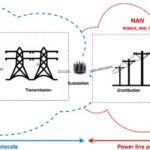Energy Monitoring in Agriculture: Harvesting Data for Sustainable Farming
Energy monitoring in agriculture is a crucial aspect of sustainable farming practices. By effectively tracking and managing energy consumption on the farm, you can optimize resource utilization, reduce waste, and minimize the environmental impact of agricultural operations. Here’s how you can harvest data for sustainable farming through energy monitoring:

1. Data Collection:
Sensor Technology:
Implement sensor technology to monitor energy consumption across various farm processes. This may include electricity usage, fuel consumption in machinery, and water usage for irrigation.
Smart Meters: Install smart meters to track electricity consumption in real-time. These meters provide detailed data on energy usage and allow you to identify trends and anomalies.
2. Energy Sources:
Renewable Energy: Monitor energy production from renewable sources such as solar panels or wind turbines. Track the output of these systems and their contribution to overall energy needs.
3. Data Analysis:
Data Logging:Collect and store energy consumption data over time. Ensure that this data is easily accessible and well-organized for analysis.
Energy Consumption Patterns: Analyze data to identify patterns in energy consumption. This can help you understand when and where energy is being used most.
Benchmarking: Compare energy usage to industry benchmarks and best practices to identify areas where you can improve efficiency.
4. Energy Efficiency:
Optimize Machinery: Use data to schedule maintenance and optimize machinery operations. Regular maintenance can improve the energy efficiency of equipment.
Precision Agriculture: Implement precision agriculture techniques, such as variable-rate irrigation and fertilization, guided by data, to reduce energy and resource consumption.
5. Irrigation Management:
Soil Moisture Monitoring: Use sensors to monitor soil moisture levels and adjust irrigation schedules accordingly. This prevents over-watering and minimizes energy usage in pumping water.
6. Energy Cost Reduction:
Time-of-Use Pricing: Analyze energy consumption data to take advantage of time-of-use pricing plans, reducing energy costs by scheduling high-energy tasks during off-peak hours.
Energy-Efficient Equipment: Upgrade to energy-efficient equipment and lighting systems where feasible.
7. Carbon Footprint Reduction:
Emissions Tracking: Monitor and track carbon emissions associated with energy consumption. Identify opportunities to reduce emissions through energy-efficient practices and alternative energy sources.
Benifits:
Cost Reduction:
Energy monitoring helps identify energy inefficiencies and excessive consumption, allowing for targeted energy-saving measures. By optimizing energy use, farmers can lower their operational costs, which is particularly important in today’s competitive agricultural market.
Resource Efficiency:
Energy monitoring allows for the efficient use of resources such as water, fuel, and electricity. For example, by monitoring irrigation systems, farmers can reduce water waste and improve water-use efficiency.
Predictive Maintenance:
Energy monitoring can help predict maintenance needs for equipment and infrastructure. This proactive approach prevents costly breakdowns and ensures that farm machinery operates at peak efficiency.
Sustainability:
Sustainable farming practices are critical for environmental preservation. Energy monitoring enables farmers to reduce their carbon footprint by optimizing energy use and integrating renewable energy sources into their operations.
Improved Crop Yield:
Efficient energy use in climate control systems, lighting, and irrigation can result in improved crop yield and quality, ultimately increasing profitability.
Regulatory Compliance:
Many regions have regulations related to energy and environmental standards in agriculture. Energy monitoring helps farms ensure compliance with these regulations.
Remote Monitoring:
Energy monitoring systems can be accessed remotely, allowing farmers to monitor and control various aspects of their operations even when they are not on-site. This remote access enhances operational efficiency and convenience.
Data-Driven Decision-Making:
Energy data provides valuable insights that inform decisions about resource allocation, equipment upgrades, and the implementation of sustainable practices.
Load Shifting:
Energy monitoring can help farmers take advantage of off-peak electricity rates, enabling them to shift energy-intensive tasks to times when energy is more affordable
Emissions Reduction:
By optimizing energy use and implementing sustainable practices, energy monitoring contributes to reduced emissions of greenhouse gases, which is essential for mitigating climate change.
Water Management:
Water is a precious resource in agriculture. Energy monitoring helps farmers monitor and manage water pumps, irrigation systems, and water treatment processes to optimize water use.
Asset Management:
Energy monitoring assists in asset management by tracking the performance and energy consumption of equipment and infrastructure, helping farms make informed decisions about maintenance and replacement.
Resilience:
In cases of extreme weather events or grid outages, energy monitoring can help farms implement backup power systems and ensure the continuity of essential operations.
Drawbacks:
Initial Investment Costs:
The installation of energy monitoring systems, sensors, and data collection infrastructure can be expensive, which may deter some farmers, particularly smaller ones, from adopting these technologies.
Energy Consumption of Monitoring Systems:
The energy consumption of the monitoring equipment itself can be a concern. If the monitoring system consumes a significant amount of energy, it might counteract some of the energy savings gained from optimizing farm operations.
Scalability:
Scaling energy monitoring systems to cover larger or more complex agricultural operations can be challenging. Ensuring consistent and accurate monitoring across a growing farm can be resource-intensive.
Data Storage and Management:
Storing, managing, and protecting the collected data can be complex and costly. Farmers may need to invest in data storage solutions and cybersecurity measures to safeguard their data.
Technology Obsolescence:
Rapid advancements in technology mean that monitoring equipment may become outdated relatively quickly. Keeping up with the latest technology can be costly and time-consuming.
Resistance to Change:
Traditional farming practices may resist the adoption of new technology, making it challenging to introduce energy monitoring systems to older generations of farmers.
Regulatory Compliance:
While energy monitoring systems can assist with regulatory compliance, they can also introduce new compliance challenges if they involve the collection and storage of sensitive data, especially in regions with strict data privacy regulations.
Environmental Impact:
The production, disposal, and maintenance of monitoring equipment can have environmental impacts. Ensuring that these impacts are minimized is a consideration for sustainable farming.
Access to Reliable Connectivity:
Remote and rural farming locations may lack reliable internet connectivity, which is essential for transmitting data from monitoring systems. This can limit the effectiveness of such systems.
Conclusion:
In conclusion, energy monitoring in agriculture, when applied effectively, is a powerful tool for harvesting data and promoting sustainable farming practices. It offers a range of benefits for farmers, the environment, and society as a whole. However, it also comes with challenges and considerations that need to be addressed to maximize its potential.
In the pursuit of sustainable farming practices, energy monitoring is a promising avenue for data-driven decision-making and responsible resource management.
Call us on 8291366254
Mail us at:prashant.yadav@oneunit.in





